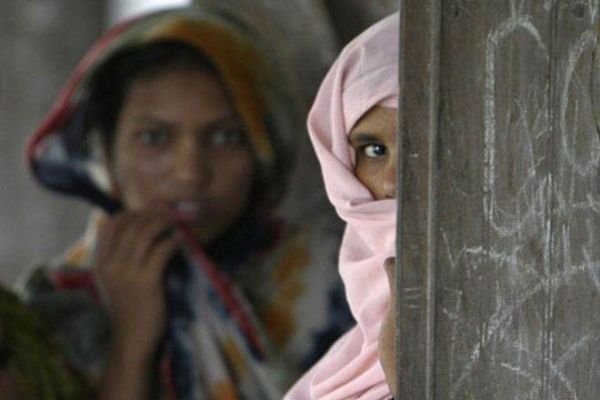1) The Women of al-Shabaab
The ongoing conflict in Somalia has provoked changes in society and shifts in family dynamics. As illustrated by the Independent Expert on Human Rights in Somalia in his Report to the United Nations Human Rights Council, as of 2011, 70% of Somali homes are female-headed households, in part due to the number of men lost to the conflict. This has left women as primary decision makers and income earners in their families, forced to engage in economic and other activities traditionally reserved for men.
Starting form this assessment, Dr Orly Maya Stern from “Adam Smith International” conducted an empirical study on all women associated with Somali militant group al-Shabaab. The category turns to be surprisingly broad, as it includes women who are actually recruits or combatants, or who actively support the group – militarily or otherwise; women who are in other ways associated with the group, as wives, abducted women or those coerced into involvement; and women who have lived in al-Shabaab-occupied territory – and possibly (but not necessarily) have exhibited some level of support or acceptance of the group. In particular, this interesting research considers two distinct topics: first, it looks at women’s roles in al-Shabaab, such as their recruitment and participation in the group, as well as their defection, rehabilitation and reintegration back into civilian society. Second, it seeks to understand the specific role that women play in men’s recruitment, participation and defection from the al-Shabaab.
The study shows how women leaving al-Shabaab have been able to more easily reintegrate back into communities than men have, due to the fact that most people in their communities did not know that they were ever involved with the group. While women may have supported the group actively, the research shows that many of them supported the group secretly from their homes, with their neighbors having little knowledge about their involvement. This differed from men who tended to go away to fight and live with the group.
To know more, please read:
http://www.orlystern.com/wp-content/uploads/2016/06/The-Invisible-Women-of-al-Shabaab-.pdf
2) The horrifying consequence of China’s “one-child policy”
Over time in Myanmar - particularly in Rakhine, Kachin and Shan States - hostilities among Buddhist and Muslims have dramatically escalated. Since 2011, a campaign of hate and dehumanization has been perpetrated against the Rohingya Muslims by the Rakhine Nationalities Development Party (RNDP). Allegations of gross human rights violations have indeed progressively increased, with the military regime not only failing to intervene, but actively conducting numerous “clearance operations” reaching the threshold of non-international armed conflict. The consequence is an ongoing and widespread situation of severe, systemic and institutionalized oppression and persecution of minorities from birth to death.
The situation is further aggravated by other two factors; first, the circumstance that many Kachin men are taking part in the conflict and women have thus become the sole wage earners; second, the fact that, while finding a job in Myanmar has become extremely difficult, the government has simultaneously decided to block aid deliveries. If that is the situation in Myanmar, China’s “one-child policy” has, on the other hand, given men a hard time finding wives, thus creating a great demand for trafficked “brides.” All these factors put together have generated a huge opportunity for human traffickers, who have managed to easily recruit Kachin women with the fake promise of procuring them a well-paid job in China, and then to sell them as “brides” to Chinese families.
It’s difficult to know how many women and girls have already been trafficked to China. Human Rights Watch started this research almost three years ago but, as explained in their interview, “it was really hard to find these women, and difficult to make people feel comfortable talking about this. […] There’s a lot of stigma against sex outside of marriage. There are a lot of reasons for people to keep these experiences a secret […]”.
To know more, please read:
https://www.hrw.org/news/2019/03/21/interview-why-brides-myanmar-are-trafficked-china
3) Sexual Violence as a Weapon of War
The term “conflict-related sexual violence” refers to a certain category of crimes, such as rape, sexual slavery, forced prostitution, forced pregnancy, forced abortion, enforced sterilization, forced marriage and any other form of sexual violence of comparable gravity, which are perpetrated against women, men, girls or boys and which are directly or indirectly linked to a conflict.
As extensively illustrated by the UN Secretary-General in his latest Report of March 2019, sexual violence continues to be used as a means of repression, terror and control, or as a tactic of war to displace communities, expel so-called “undesirable” groups and seize contested land and other resources. Incidents documented in 2018 also confirm a nexus among sexual violence, trafficking and terrorism. Radicalization and violent extremism have in fact contributed to the entrenchment of discriminatory gender norms that limit women’s roles and their enjoyment of basic rights. Sexual violence has also been a recurrent feature of recruitment by terrorist groups, who may promise marriage and sexual slaves as forms of masculine domination and status to young men.
Sexual violence may result in multiple consequences for survivors and their families, including unwanted pregnancies, stigmatization and ostracism by their own community. Efforts to provide reparations to survivors of conflict-related sexual violence have been undertaken with some success. However, despite such reparations being an obligation of States under international law, instances where victims of conflict-related sexual violence have received reparations for victims of conflict-related sexual violence remain an exception, rather than the rule.
In light of the above, and based on information collected in Afghanistan, Central African Republic, Colombia, Congo, Iraq, Libya, Mali, Myanmar, Somalia, South Sudan, Syrian Arab Republic, Yemen, Bosnia and Herzegovina, and many others, this extremely interesting Report, covering the period between January and December 2018, aims to provide a general overview on sexual violence, by illustrating its common features in conflict and post-conflict-affected settings.
To know more, please read:







